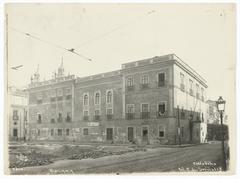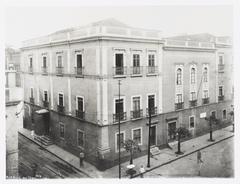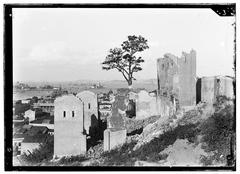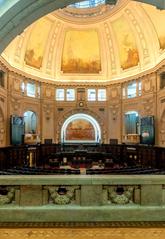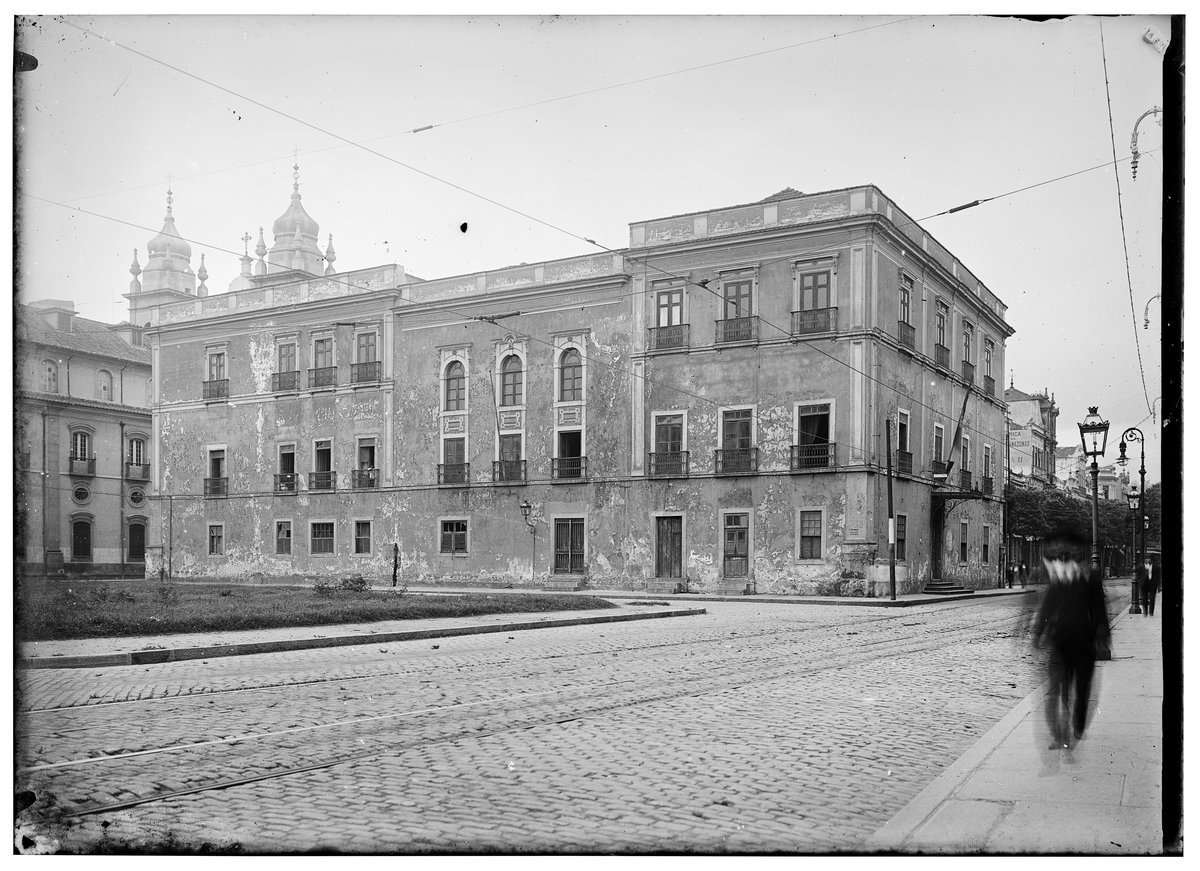
Tiradentes Palace: Visiting Hours, Tickets, and Complete Guide to Rio de Janeiro’s Historic Landmark
Date: 14/06/2025
Introduction: History and Visitor Overview
Tiradentes Palace (Palácio Tiradentes) rises majestically in the heart of Rio de Janeiro’s historic downtown, embodying Brazil’s rich political evolution and architectural splendor. Constructed between 1922 and 1926 on the grounds of the former Cadeia Velha—the prison that once held national martyr Joaquim José da Silva Xavier, or Tiradentes—the palace is deeply intertwined with pivotal moments in Brazilian history. Serving first as the seat of the Chamber of Deputies until the capital’s relocation to Brasília in 1960, it now houses the Legislative Assembly of Rio de Janeiro State (ALERJ), continuing its legacy as a center for democratic governance.
Visitors are captivated by the palace’s eclectic Neoclassical and Art Nouveau design, enriched with Brazilian motifs, impressive murals, and ornate stained glass. Free admission, regular guided tours, and comprehensive accessibility ensure Tiradentes Palace is welcoming to all, offering an engaging journey through Brazil’s transition from colony to republic (GPSmyCity; Rio Memórias; Official Website).
Contents
- Discover Tiradentes Palace: History and Significance
- Construction and Origins
- Architectural and Artistic Features
- Key Historical Events
- Visitor Information
- Visiting Hours
- Tickets and Admission
- Guided Tours
- Accessibility
- Directions
- Best Visiting Times
- Nearby Attractions
- Cultural and Educational Experiences
- Preservation and Civic Engagement
- Frequently Asked Questions (FAQ)
- Plan Your Visit: Tips and Resources
Discover Tiradentes Palace: History and Significance
Construction and Origins
Tiradentes Palace was built to celebrate the centenary of Brazil’s legislative power and honor Tiradentes, the revolutionary leader of the Inconfidência Mineira. The site previously housed the Old Jail, where Tiradentes was imprisoned before his execution in 1792. Architects Archimedes Memória and Francisco Cuchet designed the palace as a symbol of Brazil’s republican aspirations, and it officially opened on May 6, 1926 (GPSmyCity).
Architectural and Artistic Features
The palace is renowned for its Eclectic style, marrying Neoclassical grandeur with Art Nouveau and Brazilian decorative elements. Highlights include:
- Façade: Six monumental Corinthian columns and allegorical sculptures representing independence and the Republic.
- Central Dome: Adorned with stained glass and painted panels by Rodolfo Chambelland and Eliseu Visconti, symbolizing Brazil’s progress.
- Interior: The Noble Hall and plenary chamber feature ornate woodwork, murals, and stained glass by renowned artists such as Eliseu Visconti and Rodolfo Amoedo.
- Sculptures: The statue of Tiradentes by Francisco de Andrade stands at the entrance, accompanied by allegorical Victories.
Key Historical Events
- National Congress Seat (1926–1960): The palace hosted crucial legislative debates, including the drafting of the 1934 and 1946 constitutions.
- Estado Novo Era: Temporarily repurposed for the Department of Press and Propaganda during the authoritarian regime (1937–1945).
- State Legislature (from 1960): Became the seat of the Legislative Assembly of Rio de Janeiro State after the capital moved to Brasília.
- Democratic Symbol: The palace remains a focal point for political demonstrations, civic engagement, and national memory (Rio Memórias).
Visitor Information
Visiting Hours
- Monday to Saturday: 10:00 a.m. – 5:00 p.m.
- Sundays and Holidays: 12:00 p.m. – 5:00 p.m.
- Closed: Occasionally for official events or maintenance—check the official website for updates.
Tickets and Admission
- Admission: Free for all visitors. No advance booking required for individuals.
- Group Tours: Schedule in advance via the official website.
Guided Tours
- Languages: Primarily in Portuguese, with simplified English explanations available on request.
- Tour Content: Includes the grand staircase, plenary hall, legislative galleries, and the permanent exhibition “Lugar de Memória do Parlamento Brasileiro.”
Accessibility
- Fully wheelchair accessible with ramps and elevators.
- Visitor assistance available upon request.
Directions
- Address: Rua Primeiro de Março, s/n – Praça XV, Centro, Rio de Janeiro, CEP 20010-090
- Metro: Carioca (Lines 1 & 2) or Cinelândia stations—short walk to the palace.
- Bus: Multiple routes serve the area.
- Taxi/Rideshare: Drop-off points near the entrance.
- Parking: Limited in the historic center; public transport recommended.
Best Times to Visit
- Weekday mornings are generally quieter.
- Avoid peak times during school group visits or major events.
Nearby Attractions
- Paço Imperial
- Candelária Church
- Municipal Theatre of Rio de Janeiro
- National Library
- Praça XV
- Museu Naval
- Cafés and shops in the vibrant Centro district
Cultural and Educational Experiences
Tiradentes Palace is an active cultural hub, hosting:
- Historical Exhibitions: The permanent and rotating displays illuminate Brazil’s legislative history.
- Art and Concerts: Events in the Noble Hall and galleries.
- Educational Programs: Popular with school groups and university students, fostering civic education.
- Public Events: Lectures, debates, and cultural celebrations.
Permanent Exhibition
- “Palácio Tiradentes: Lugar de Memória do Parlamento Brasileiro” offers a multimedia narrative of Brazilian political evolution, with historic artifacts and photographs.
Preservation and Civic Engagement
Designated a heritage site by IPHAN in 1993, the palace undergoes continual restoration to safeguard its architectural and artistic treasures (Rio Memórias). It stands as both a symbol of Brazil’s democratic resilience and a venue for public discourse, reflecting the nation’s diverse heritage.
Frequently Asked Questions (FAQ)
Q: What are Tiradentes Palace’s visiting hours?
A: Monday to Saturday, 10:00 a.m.–5:00 p.m.; Sundays and holidays, 12:00 p.m.–5:00 p.m.; closed for official events or maintenance.
Q: Is admission free?
A: Yes, entry is free for all visitors.
Q: Are guided tours available?
A: Yes, free tours are offered in Portuguese, with occasional support in English. Group tours should be scheduled in advance.
Q: Is the palace accessible for people with disabilities?
A: Yes, ramps, elevators, and accessible restrooms are provided.
Q: Can I take photographs inside?
A: Photography is generally permitted, but flash and tripods are not allowed in certain areas.
Q: How do I get to the palace?
A: The building is centrally located in downtown Rio, close to Carioca and Cinelândia metro stations and numerous bus lines.
Q: What nearby sites can I visit?
A: Candelária Church, Paço Imperial, Municipal Theatre, National Library, and other Centro district attractions.
Plan Your Visit: Tips and Resources
- Arrive early to enjoy a quieter experience and better photography conditions.
- Dress respectfully—the palace is an active government building.
- Check the official website for updated hours, events, and virtual tour options.
- Download the Audiala app for guided tour support, insider tips, and updates on Rio’s historical sites.
References and Resources
- GPSmyCity – Palácio Tiradentes
- Rio Memórias – Tiradentes Palace
- Palácio Tiradentes Official Website
- Rio Cultural Secrets – Historical Sites
- Google Arts & Culture Exhibition
- Interactive Map
Tiradentes Palace is a testament to Brazil’s enduring democratic spirit and artistic achievement. Whether you are a local, a student of history, or a global traveler, a visit to this landmark offers an inspiring immersion into the story of a nation. Plan your visit, explore nearby treasures, and deepen your understanding of Rio de Janeiro’s historical heart.

